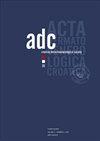是否应该将对羟基苯甲酸酯混合物从欧洲基线系列中移除?
摘要
尊敬的编辑:欧洲接触性过敏原基线系列(EBS)在整个欧洲被用作诊断接触性过敏的筛选试验,作为过敏接触性皮炎和其他超敏性皮肤病的代表(1)。对羟基苯甲酸酯是具有抗菌作用的对羟基苯甲酸烷基酯,用作化妆品、食品和药物的防腐剂,已被列入所谓的“基线系列”(2)超过40年。对羟基苯甲酸酯被认为是过敏性安全的杀菌剂,被美国食品和药物管理局(FDA)和欧洲消费者安全科学委员会(SCCS)列为安全类(2-4),经常出现在化妆品中(5)。尽管在全球范围内广泛且逐步扩大使用,但研究证实,对羟基苯甲酸酯很少引起化妆品的过敏性接触性皮炎。几十年来,对羟基苯甲酸酯敏感的频率一直很低且稳定(2)。在大多数临床系列中,对羟基苯甲酸酯混合物的阳性反应的频率低于0.5%,尽管当它发生时,似乎往往具有很高的临床相关性(6)。一些作者指出,这些患者很少或从不需要避免含有对羟基苯甲酸酯的食物或化妆品来控制他们的皮炎(2)。对羟基苯甲酸酯过敏最常发生在长期停滞性皮炎或皮肤完整性破坏的患者中,外用药物的使用较多。以及那些在正常治疗和/或皮肤护理下没有好转的人(5)。根据频率研究,欧洲环境和接触性皮炎研究小组(EECDRG)和欧洲接触性皮炎学会(ESCD)定期对EBS进行调整,但要确保测试的半抗原保持相关性(1)。Bruze等人建议,当接触性过敏患病率为0.5-1.0%或更高时,应考虑将半抗原纳入基线系列(7)。为什么不从EBS中排除对羟基苯甲酸酯混合物?我们分析了过去21年(2000-2020年)在我们机构进行的所有EBS测试,以评估对羟基苯甲酸酯混合物16% pet的阳性反应频率(Chemotechnique diagnostics, Vellinge Sweden)。总共有5885名患者进行了斑贴试验(MOAHLFA指数-表1),其中29名(10名男性和19名女性)患者对对羟基苯甲酸酯混合物呈阳性反应(根据ESCD指南为1+或更多)(0.49%),阳性率在1.79%至0.0%之间变化,并在过去20年中逐渐下降(图1)。在19/29(65.5%)患者(6名男性和13名女性)中发现了目前或过去的临床相关性。与外用药物16例(55.2%)、化妆品3例(10.3%)有关。对羟基苯甲酸酯反应主要发生在有腿部溃疡、腿部皮炎和/或慢性静脉功能不全病史的患者中,这与与整个测试人群相比,腿部皮炎患者组的过度代表一致(表1)。与没有腿部皮炎的患者相比,腿部皮炎患者对对羟基苯甲酸酯混合物阳性反应的患者比例显着更高(P40 (PDear Editor: The European Baseline Series (EBS) of contact allergens is used throughout Europe as a screening test to diagnose contact allergy as a proxy for allergy contact dermatitis and other hypersensitivity skin diseases (1). Parabens are alkyl esters of p-hydroxybenzoic acid with antimicrobial effects used as preservatives in cosmetics, foods, and drugs that have been included in the so called "baseline series" (2) for more than 40 years. Parabens, which are considered allergologically safe biocides and are classified as safe by the US Food and Drug Administration (FDA) and the Scientific Committee on Consumer Safety (SCCS) in Europe (2-4), are frequently present in cosmetics (5). Despite extensive and progressively expanding use worldwide, studies confirm that parabens are seldom responsible for allergic contact dermatitis to cosmetics, and the frequency of sensitivity to parabens has been low and stable for many decades (2). The frequency of positive reactions to paraben mix is less than 0.5% in most clinical series, although it seems that when it occurs it is often of high clinical relevance (6). Nevertheless, several authors have stated that these patients rarely or never have to avoid foods or cosmetics that contain parabens to control their dermatitis (2). Paraben allergy most frequently occurs in patients with long-lasting stasis dermatitis or disruption of skin integrity, with high use of topical drugs, and in those who do not get better under normal treatment and/or skin care (5). The EBS has been periodically adapted by the European Environmental and Contact Dermatitis Research Group (EECDRG) and the European Society of Contact Dermatitis (ESCD), according to frequency studies, but ensuring that tested haptens remain relevant (1). Bruze et al. recommend that haptens should be considered for inclusion in a baseline series when the contact allergy prevalence is 0.5-1.0% or above (7). So, why not exclude paraben mix from the EBS? We analysed all the EBS tests performed at our institution in the last 21 years (2000-2020) to evaluate the frequency of positive reactions to paraben mix 16% pet (Chemotechnique diagnostics, Vellinge Sweden). In total, 5885 patients were patch tested (MOAHLFA index - Table 1), of whom 29 (10 men and 19 women) patients presented with a positive reaction (1+ or more according to ESCD guidelines) to paraben mix (0.49%), with positivity rates varying between 1.79% and 0.0% and progressively falling for the past 20 years (Figure 1). Present or past clinical relevance was found in 19/29 (65.5%) patients (6 men and 13 women), and was related to the use of topical drugs in 16 patients (55.2%) and cosmetics in three patients (10.3%). Paraben reactions occurred mostly in patients with history of leg ulcer, leg dermatitis, and/or chronic venous insufficiency, which is in agreement with the overrepresentation of the group of patients with leg dermatitis compared with the whole population tested (Table 1). The proportion of patients with positive reactions to paraben mix was significantly higher in patients with leg dermatitis compared with patients without leg dermatitis (P<0.05), as well in patients aged >40 (P<0.05), in whom these leg comorbidities are more frequent. Additionally, the higher number of reactions frequently coincided with the highest number of patients with leg dermatitis patch tested in the same year (Figure 1). Cosmetics were considered the causative factor in only three patients, which explains the identical percentage of facial and atopic dermatitis in the paraben mix positive group and the total population tested. As expected, both hand and occupational dermatitis were underrepresented in the group of positive reactions to parabens. In 34.5% of the patients, positive tests were considered not relevant or of unknown relevance. Therefore, in total only 0.32% of all paraben mix reactions were clinically relevant. Patch test reactivity to paraben mix of 0.49% supports the ongoing discussion that parabens should not continue in the baseline series, a position that is further strengthened by the fact that only 0.32% represent relevant reactions (8). As the most relevant sensitizations are related to topical medications and, less frequently, from cosmetics, paraben mix should be part of the topical drugs and cosmetic series.

 求助内容:
求助内容: 应助结果提醒方式:
应助结果提醒方式:


